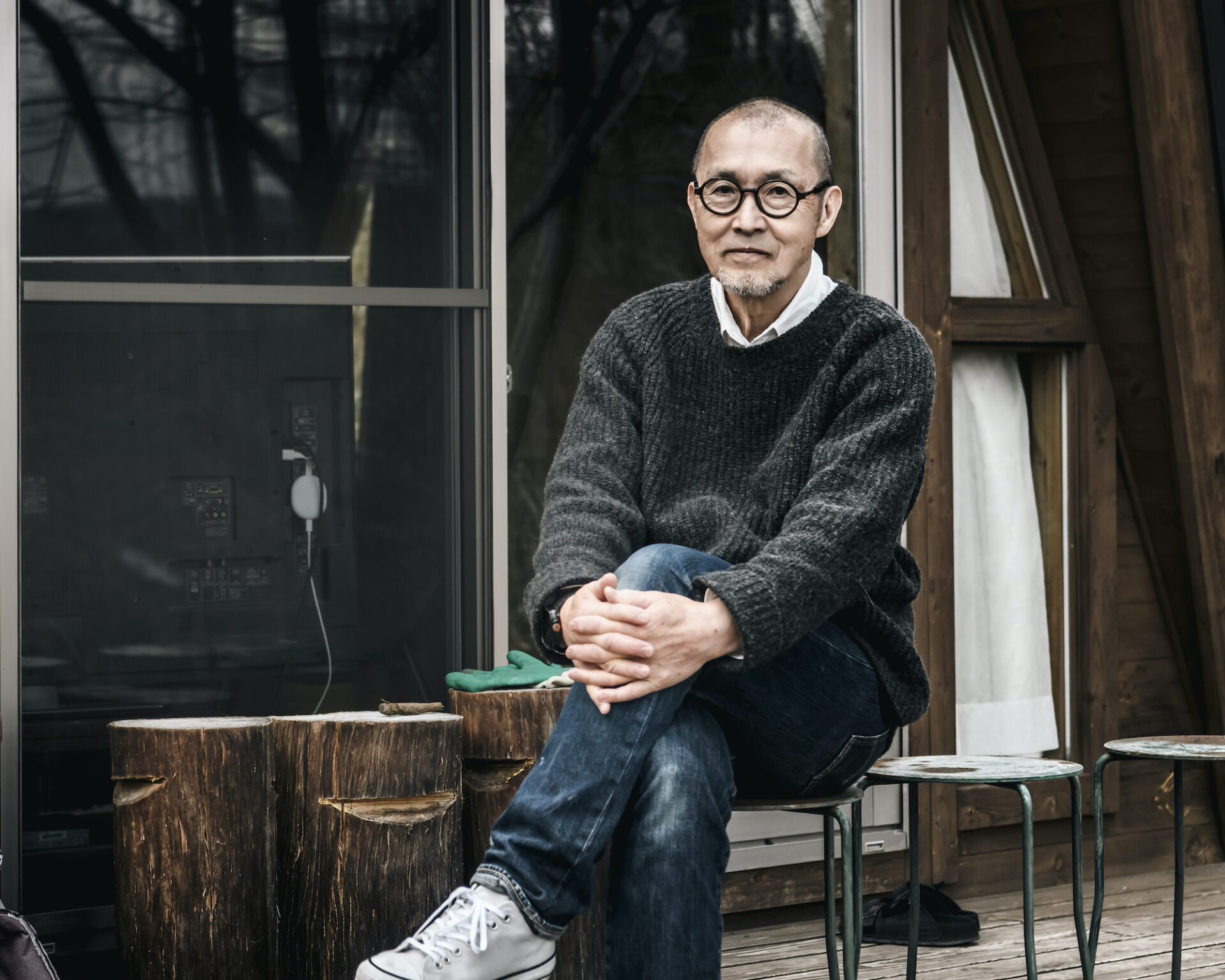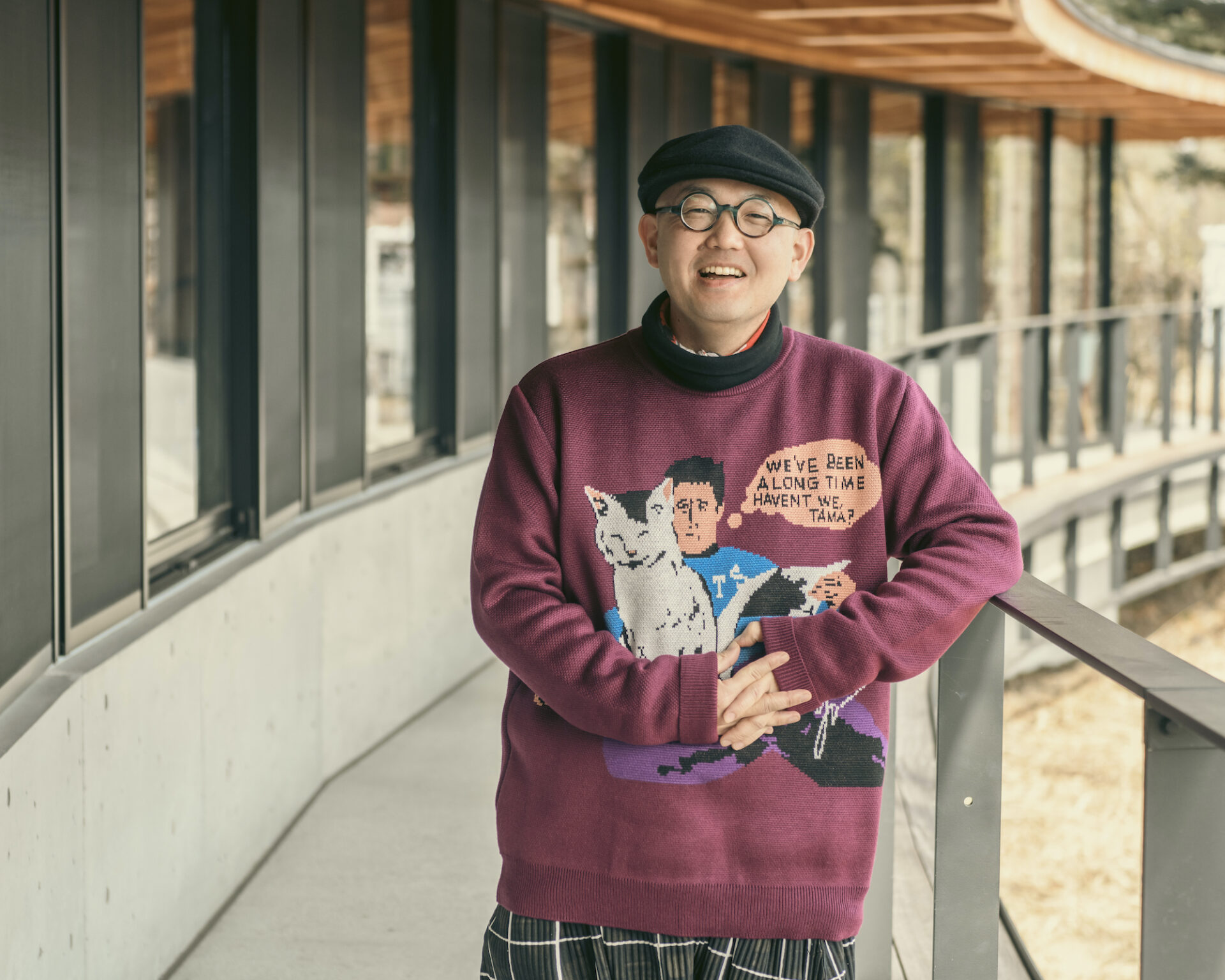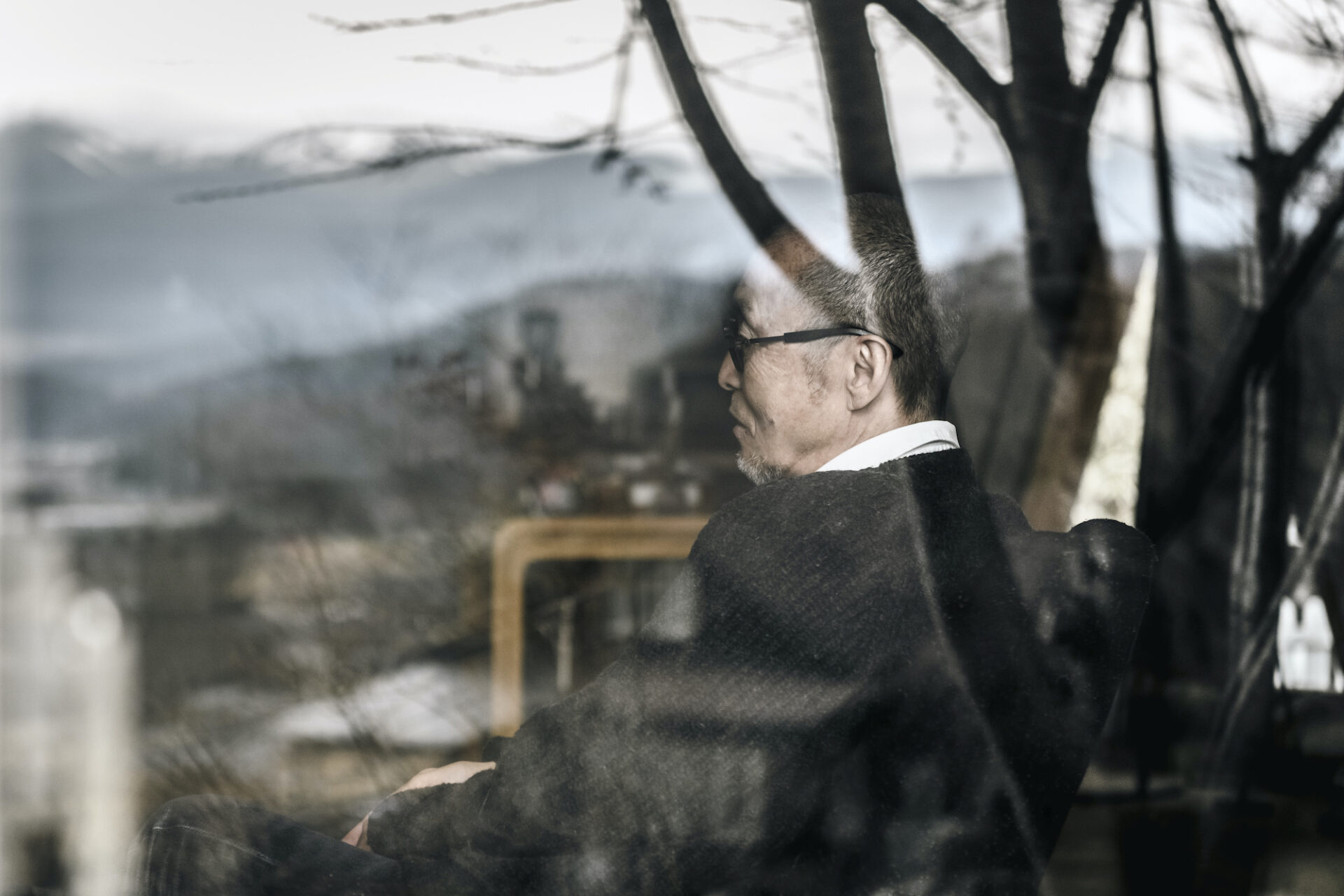
2025-05-22
Vol.17
Photographer
Mikio Hasui(part 2)
-
Living like Sipping Clear Soup
-
Flat and Silent World as the Core of Life
-
Pursuing Originality and Loving Others
-
Human/Machine-Oriented Designs
In January 2024, a massive earthquake struck the Noto region of Ishikawa Prefecture. The damage was enormous, claiming many lives, destroying homes, and damaging many valuable cultural treasures created in the area. While many tried to repair the broken objects using the traditional Japanese technique called “Kintsugi,” or to transform them into new creations, photographer Mikio Hasui turned his lens on the “phenomenon” itself, seeing the beauty in the broken pieces and trying to record them “as they are.” How was his series of photographs, which reflect the competing relationship between nature and humans while exuding a sense of calm and tension, created? OSAJI brand founder Masakazu Shigeta visited Mr. Hasui’s studio in Chino City, Nagano, to talk about how the works were created and his thoughts behind the exhibition title, “Beauty Dwells Even in the End of Decay.”
(Click here for the first half of the interview.)

“I want young people to consider more seriously what beauty means to them.” (Hasui)
Mikio Hasui: Recently, something happened that could drastically change my life. I had planned to live in Chino for the rest of my life, but then I came across information about a property in Kamakura. I went to take a look half in fun, but I immediately knew it was exactly what I had been looking for, and I ended up purchasing it.
The property was designed by Keiji Yoshida, a leading expert in Japanese architecture who studied under Junzo Yoshimura and others. Upon entering, you can see a tea room, and the scent of Tatami mats fills the air. Speaking of comfort, the house in Chino is better because I can listen to music at high volumes with air conditioning and security systems. However, as for beauty, the property in Kamakura is overwhelmingly more beautiful with the light shining on the tatami mats and the soft light streaming through shoji, or paper sliding doors. I want to spend the rest of my life in that beautiful space. Rather than listening to my favorite jazz with the excellent sound system, I am starting to think that living without sound is better.
——As represented by the “Water Cycle” series, you have been creating minimalistic works for the past few years. I think it is only natural that you would want to live a minimalist lifestyle.
Hasui: It feels more like I purchased a minimalist artwork by Keiji Yoshida rather than a house. I want to savor the time deeply, like sipping a clear Japanese soup. I want to take into myself the sense of Noh, where you move without shaking your body, taking sliding steps.
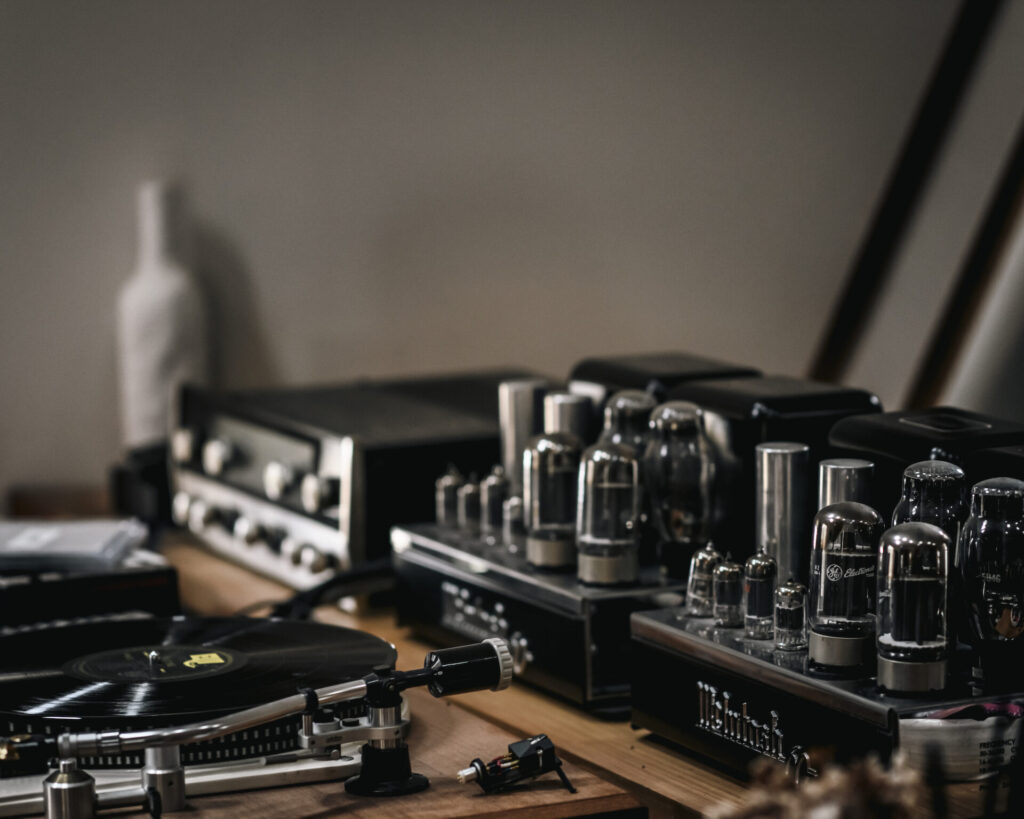
Masakazu Shigeta: Earlier, you showed us a vintage Lotus Elan in your garage. What does driving mean to you?
Hasui: Well, I simply enjoy driving on the road. I focus all my attention on the information coming from the road surface and drive without waste- that is the most pleasurable moment of driving for me.
——When do you get the urge to drive?
Hasui: It depends on the time, just like when you want to listen to music. If you ask me whether I can live only with the bare minimum of furniture in Kamakura, that is not the case. I can not imagine a life without a car or audio. Having contrast is essential in life, and it also makes life shine.
That being said, if asked what I want to focus on in my life from now on, I would say “silence.” I have the same idea for my work- I want to take photos that are silent but have presence, and they are not necessarily beautiful. In June, I will hold a solo exhibition “17 portraits of Sea” in Aoyama, Tokyo, and the seascape photographs I will present there truly embody the theme.
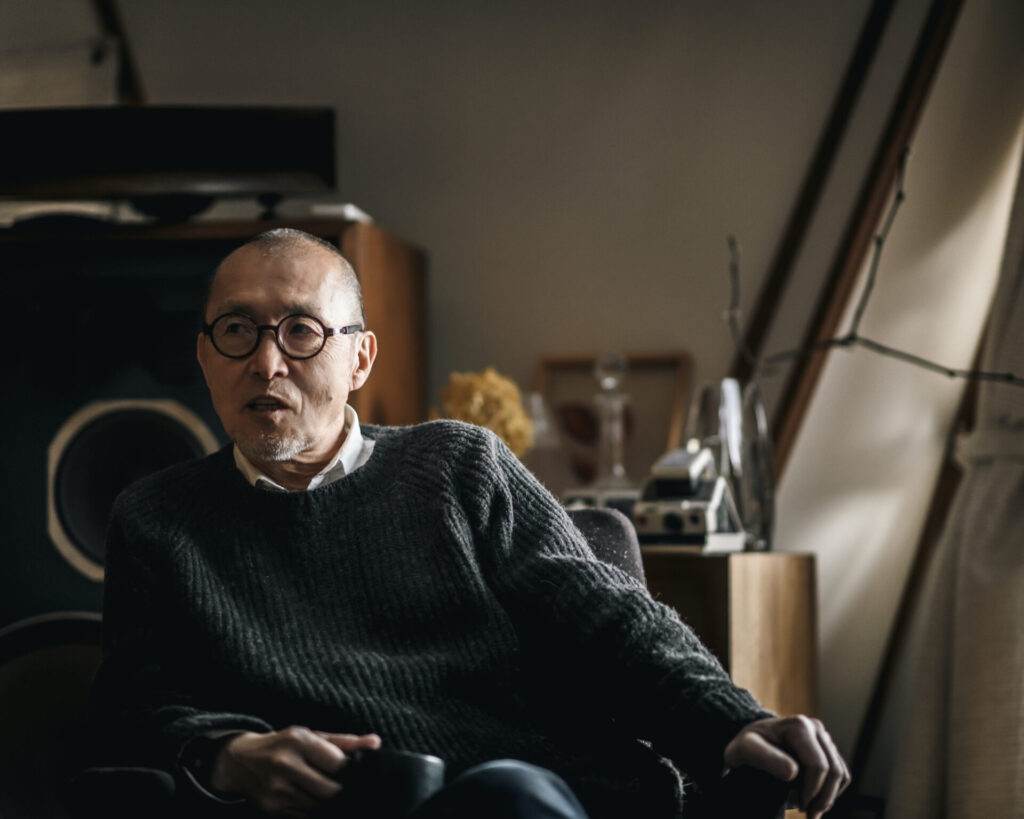
——On what criterion did you choose the 17 seas?
Hasui: The seas are located near nuclear power plants such as Tsuruga, Kashiwazaki, Hamaoka, Tomari, and Onagawa. I placed a camera near the plants and photographed the seascapes from there. What I wanted to capture was not a decisive moment or anything like that, but simple seascapes you can see anytime you go there.
Whether there are plants or not, the sea is always very beautiful. However, the presence of nuclear power plants nearby creates the risk of turning it into a “sea of death” immediately after a disaster. On a global scale, the “sea of death” is just a dot, but people living nearby, people who eat fish caught in the area, and people who breathe the air carried from there are inevitably exposed to radiation. Why do we build dozens of plants, taking such risks? That is because we want to have a rich life through electricity. The electricity generated by the nuclear power plants has given us bright nights and cool summers. We can not imagine life without electricity anymore. However, we inevitably end up polluting the environment in the pursuit of comfort and convenience. In a sense, that is what we can not abandon, but I feel there should be a boundary line that we must not cross, and we should think more seriously about that boundary. The reason we can enjoy delicious fish and mushrooms is that nature is in its normal state. Is it OK to easily destroy the gift? Is it OK to do something that the next generations will not be able to eat delicious fish? In the solo exhibition in June, I tried to incorporate the intention to raise awareness of such issues.
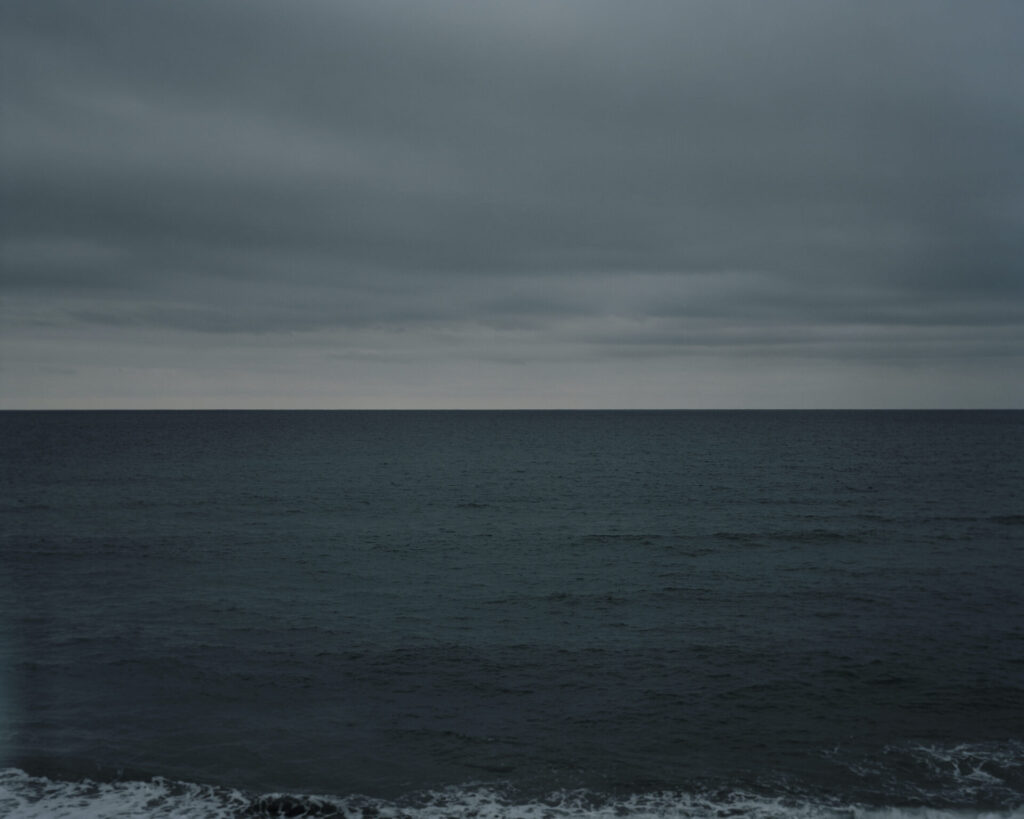
——Do you have any intention to oppose nuclear power?
Hasui: No, I don’t. I know there are many people whose livelihoods depend on the nuclear power plants. While taking photos, I was frequently asked if I am against nuclear power. Their attitude immediately got cold once I said, “I am against, but…” When I asked if it would be scary if there were an accident, referring to the accident in Fukushima, the local people said it wouldn’t occur there. When you start thinking about the necessity of the plants, it inevitably leads to political discussions, like whether there was any reason to build the plants that many, or how much money was spent, including the compensation for the local residents. That is not what I want to do- I want people to think about the values and joys of life once again, and ask ourselves whether having access to everything, including information, makes us really happy. In other words, I want to convey the idea that we should try to find and enjoy beauty in our daily lives.
Young people today might find beauty in Vocaloids. But I doubt if they really think it is beautiful, maybe it’s just fun? I feel that way. I am not saying that they should stop it, but I want young people to consider more seriously what beauty means to them.
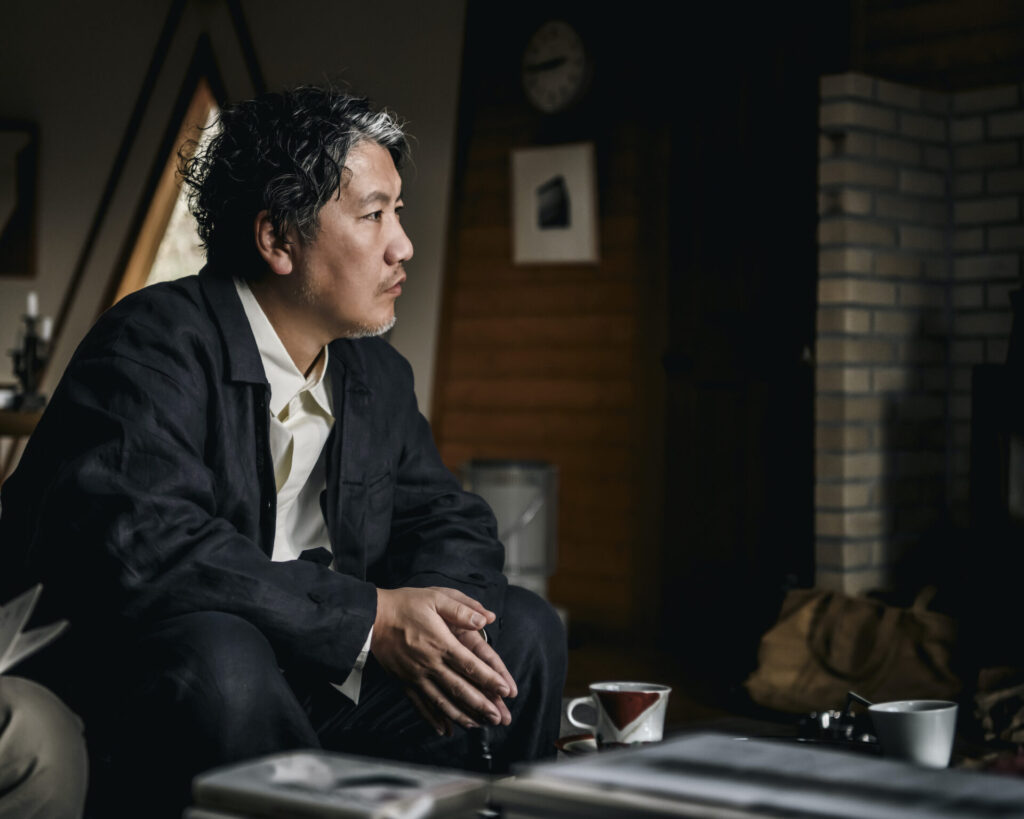
“In the process of input and output, the region-specific cultural DNA makes a difference in output.” (Shigeta)
——These days, it seems that more people overseas are paying attention to Japanese beauty than Japanese people themselves. What are your thoughts on the spread of Japanese aesthetics and beauty-related values to the world?
Hasui: Recently, more and more people in Japan have started practicing yoga. It may be suitable for maintaining health, but I think it also spreads in a way that is different from the original purpose, such as deep meditation and concentration of self-awareness. I believe it is similar to how people overseas try to incorporate Japanese beauty into their culture. It is simply rare and somehow appealing, so they give it a try. But speaking of the essence, I think only Japanese people can understand Japanese beauty and know how to express it.
I believe the culture of each country should be more independent, and strengthening the independence of its own culture is better. Therefore, I don’t want people around the world to fully understand or imitate Japanese beauty.

Shigeta: When I went to Milan Salone last year, I saw some conceptual displays by overseas interior brands. They are inspired by Japanese aesthetics such as “In’ei Raisan” or “Wabi-sabi,” and I realized it has become increasingly difficult to explain Japanese beauty solely through knowledge and theory.
Speaking of how people gain information, we are now on the same platform worldwide. Even if you are on a remote island, you can get the same information as people in major cities. In that context, if there is a difference in what comes out after the same thing is input, it must be tradition and culture rooted in the region. In the process of input and output, the region-specific cultural DNA makes a difference in output. I don’t think it is pure if you try to create something Japanese from the outset.
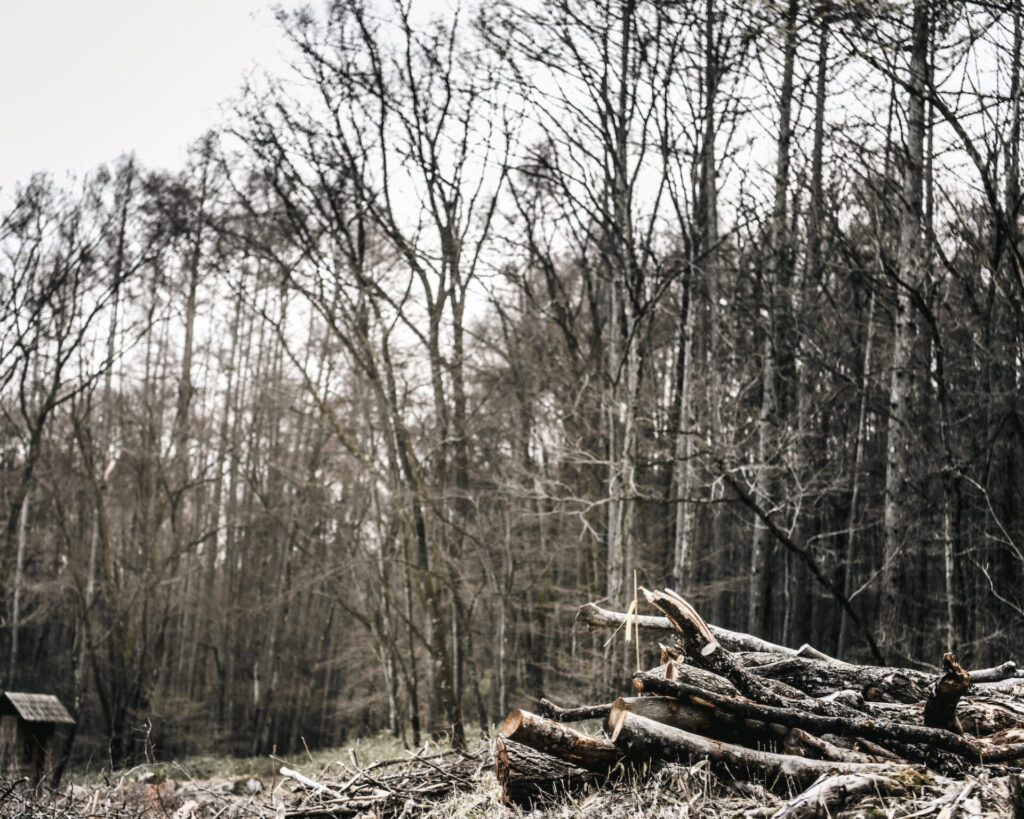
Hasui: As for what lies at the core of Japanese aesthetics, I think it is about seeing everything in a flat way. You do not get overly excited or happy, and you keep your emotions in check to see things from a broad perspective. That way, you choose what is really necessary and combine what you have selected. I think that sort of design work is most important. At that moment, having something as your core is most important, and for me, it is the flat and silent world. I don’t like something flashy.
——Have you always felt that way?
Hasui: Well, I don’t really remember. I am no longer interested in my past.
I am only interested in things about today or tomorrow. I don’t want to worry much about the past or the future, but I just want to live now to the fullest extent.
Shigeta: Do you also think that way when you choose items?
Hasui: I choose items based on whether I can use them with care and love them for a long time.
Shigeta: I am 46 now, and I feel I am finally coming to understand the feeling a little bit these days, and it makes me really happy.
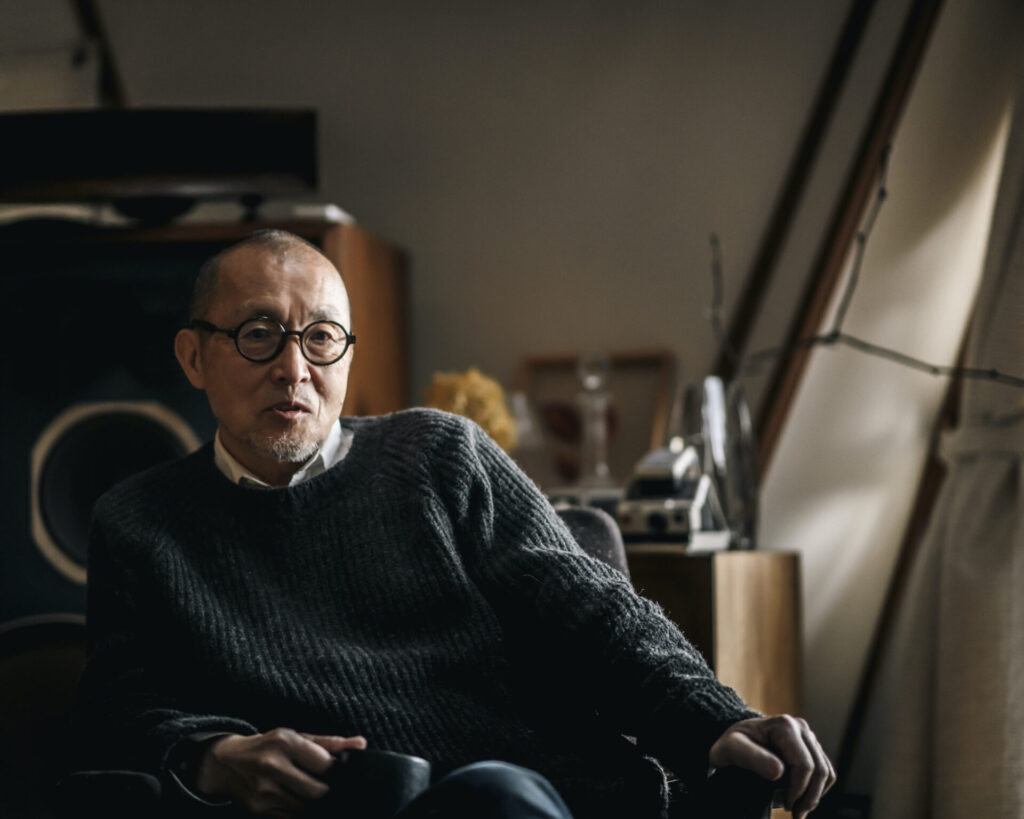
“Both in the pursuit of originality and in how you love others, what is important is to avoid comparing yourself with others.” (Hasui)
Hasui: Mr. Shigeta, I believe you will reach an extraordinary state in 20 years. When I was 46, I was really oblivious to the world around me because I was so absorbed in my work. I took on a tremendous amount of work with determination to become the top photographer in the advertising industry. Looking back now, I wonder why I worked so hard like that.
Shigeta: I guess it was the time when status and fame had tremendous energy.
Hasui: That might be true. However, the reason I wanted to become the top photographer was not for status or fame, but for originality- I wanted to have my own style unlike any other.
I quit my job as an art director in my 30s and turned to a photographer, but I was extremely poor in the first 10 years. I had no work, so I lived in a Fiat Panda I bought for 150,000 yen. I had only three jerseys and two jeans, all purchased at a supermarket. Since I was always dressed like that, when I went out with a girl, who would become my second wife, she often asked me, “You only have sets of jerseys?” (laughs)
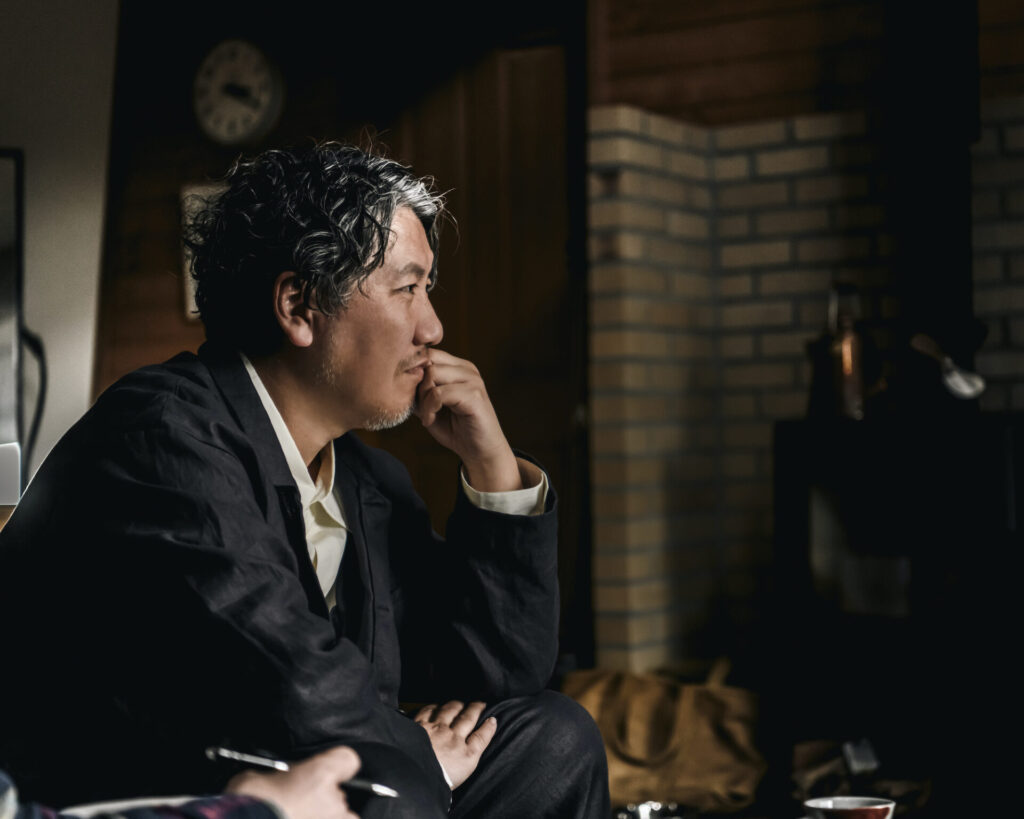
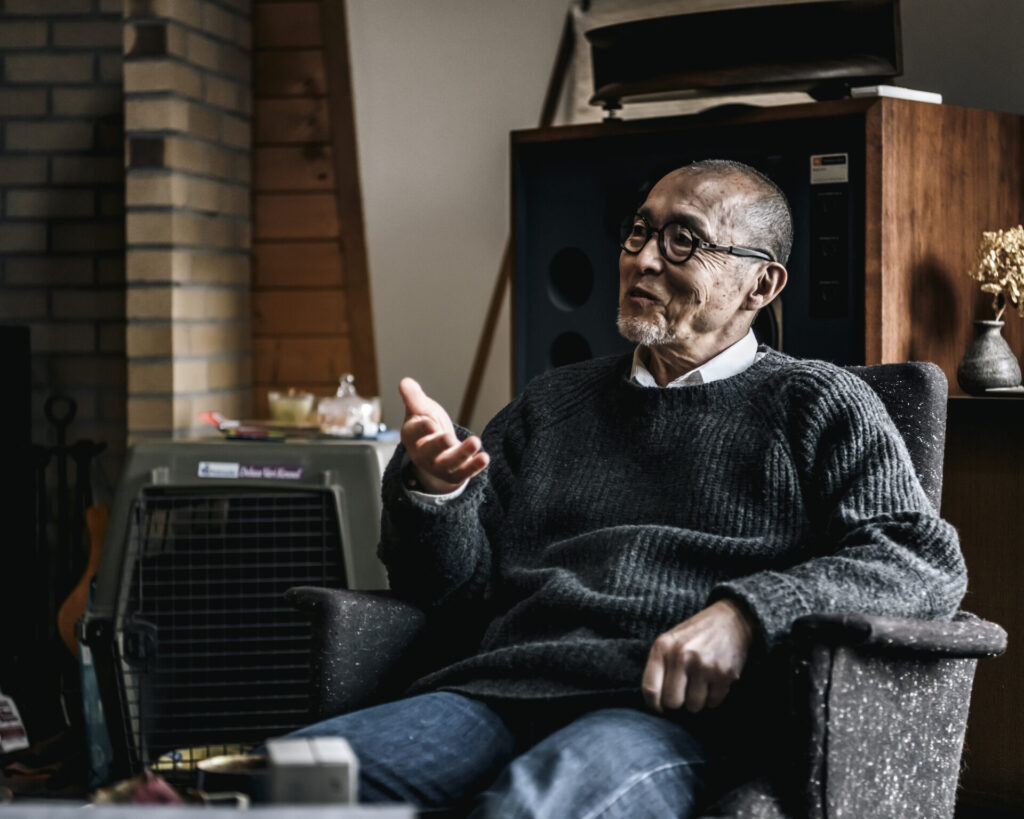
So, I was delighted when I received work at such a time.
That feeling of happiness is something I will never forget. I never turn down offers because of the experience. Whether the pay is high or low, I never refuse. Once someone has given me an opportunity, I want to do my best. But other photographers sometimes complain at me, saying, “Mr. Hasui, please don’t take on the offers at such low prices, our business will dry up!” (laughs)
My two marriages and divorces have caused my children a great deal of pain. However, we still maintain a relationship as a former family. I live this way now solely because they still love me, even though I was selfish. What remains for humans in the end is, after all, love. To achieve it, being loved by someone is not enough; you must love the person as well. It took me 70 years to realize that, and I think humans are truly foolish.
Shigeta: For me, pursuing unique originality is at odds with loving people. How did you cope with both?
Hasui: Both in the pursuit of originality and in how you love others, what is important is to avoid comparing yourself with others. You have to believe that only you can love the way you do, and the prerequisite for that is gratitude toward other people. For me, the standard of love is whether or not you can sincerely say “thank you.”
Shigeta: Your idea that we should not compare ourselves with others makes sense to me. I have seen many artists who had no choice but to become selfish in the pursuit of originality, sacrificing love.
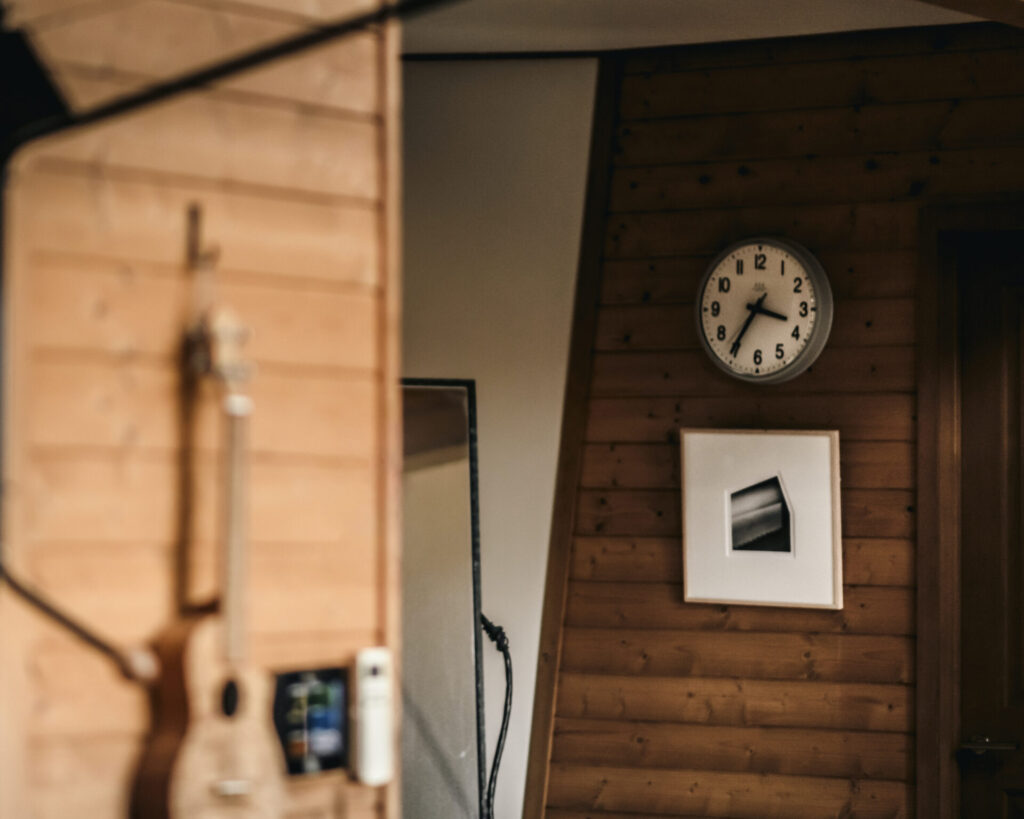
Hasui: When you enter the realm of expression, where you have to constantly think about how others see your work, you inevitably become selfish. However, the most important thing is whether or not you can truly say something is “beautiful” or “I like it.” My idea of not comparing others includes such meanings as well. In photography, the tools we use are almost the same. Even if the manufacturers are different, there is no difference in the act of taking photos.
——If that is the case, why do differences in “style” exist between artists?
Hasui: I think the time you spend facing yourself and how you face yourself make the difference. That somehow oozes out in your work as “style.” If people who see my photos think, “This photographer must have lived this way,” or “This photographer must have had this sort of aesthetics,” then, for me, it means that even someone like me has lived a normal life.
In that sense, knowing how much of your life is left is essential. Although I am going to live for another ten years, I am definitely in the fourth movement of the symphony of my life. So, I think I have entered a phase where I have to start controlling myself. I have lived a selfish life, getting everything I wanted and doing whatever I wanted. From now on, however, I am going to control myself, and I will be happy if I can find something that I can not give up in the end. If you endure everything and find something that you believe you can not live without, that means you have finally found what you have been looking for.
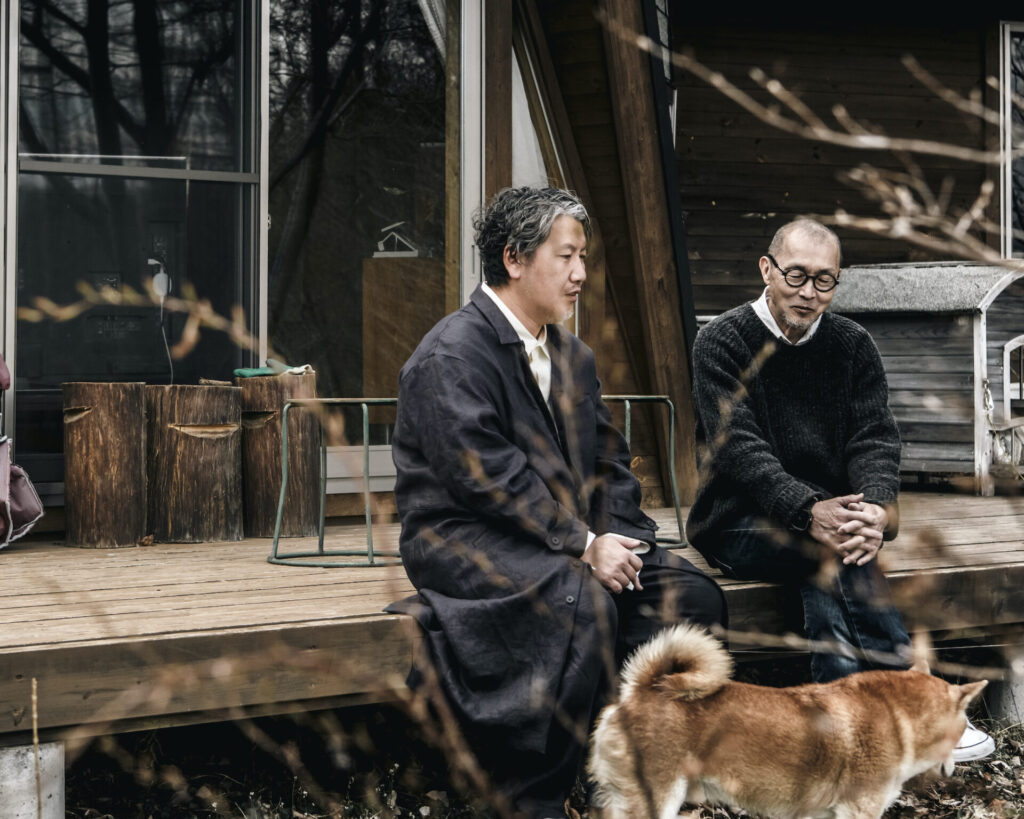
“Minimalism has been one of the Japanese standard values, and I think that is why Japanese people have come to admire something ‘maximum.'” (Shigeta)
Shigeta: I imagine you use a variety of cameras for your work. In this field, Japanese manufacturers such as Fuji Film, Sigma, Nikon, and Canon maintain high competitiveness in the global market. What are your thoughts on the reasons behind that?
Hasui: I think Japanese people are diligent and studious, after all. I also use SONY cameras, and I am always impressed by the quality. But the cameras I use most are Hasselblad and Leica. Fellow photographers often ask me why I use expensive cameras like them because they think they are all the same. They might be right, but these cameras are simply cool because the manufacturers fully understand the essence of photography and stick to the traditional manufacturing method.
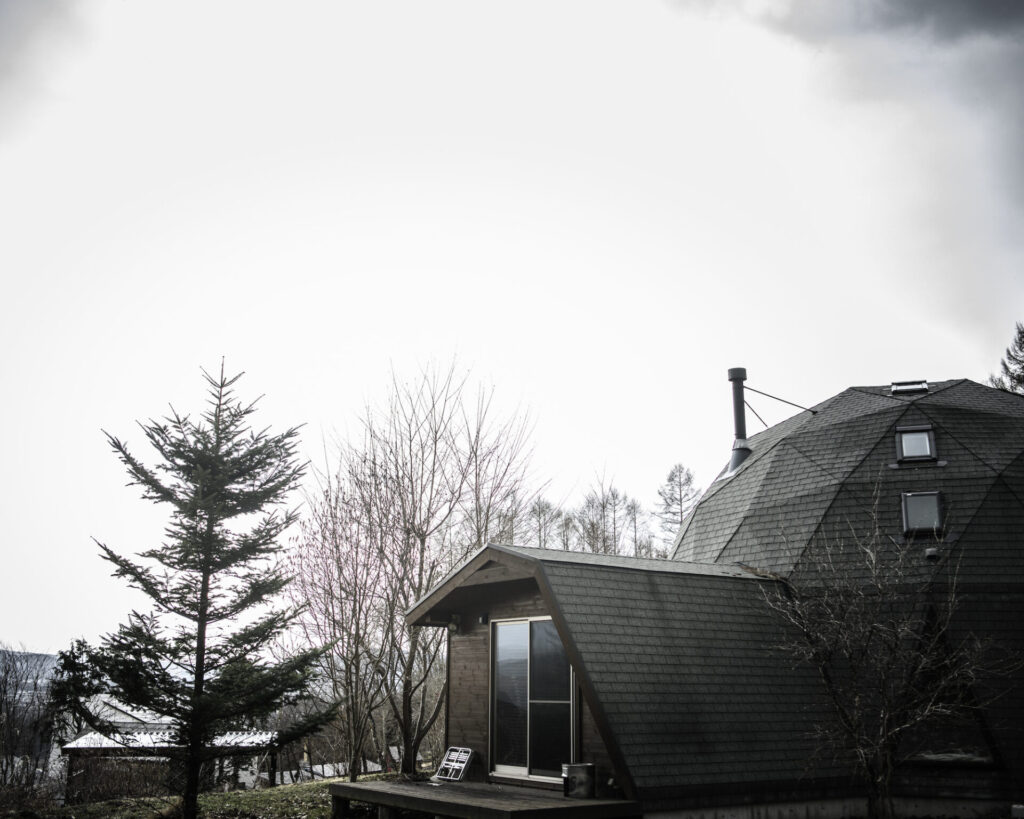
Japanese cameras are filled with controls on the back. The menu structure is extremely deep to accommodate many features. In contrast, Hasselblad’s digital cameras only have basic settings and the least necessary menus for photo shooting. They do not even have functions to convert the monitor image to monochrome. Although users can enjoy various modes in Japanese cameras, I do not need such functions. I think Hasselblad and Leica can easily add such functions if they want to, but they never do. Why? They understand that photographs are created in the minds of photographers, not by cameras. When there were only film cameras, only the photographer knew what kind of photos had been taken, and nobody could tell the colors and tones until the film was physically developed. It used to be normal to know how good the pictures were only after the development. But now, no matter how well you frame the subject with the best possible image in your mind, your original vision is overwritten because you can see the picture immediately after you take it. There is no way to develop the composition that appeared in your mind exactly as they are. I think overseas manufacturers are well aware of this problem. I believe this can be true in the car industry. In my opinion, Japanese manufacturers could import how to manufacture them, but could not import the culture of “how to use” them.
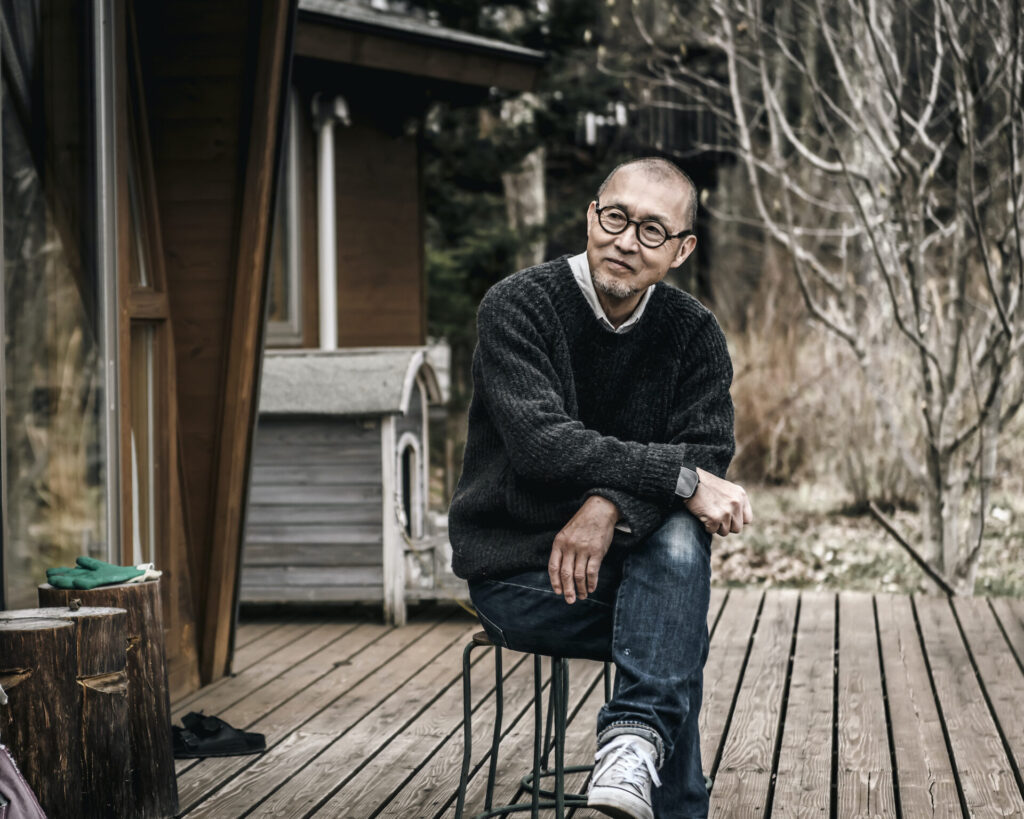
Shigeta: Leica also has models without a monitor in its lineup of digital cameras.
Hasui: Exactly. Even in models with a monitor, there are about three available image profiles. I feel that overseas manufacturers leave the joy of photography to human brains, while Japanese manufacturers tend to place more importance on mastering how to use them as a machine.
——That is the difference in the ability to create culture, isn’t it?
Hasui: I think so. However, there are many excellent points in photographs taken with Japanese cameras, and I respect that. That is also why I don’t want them to make it any more complicated. Photography is supposed to be simple. It would be a shame if the essence we lost in pursuit of details.
Shigeta: Minimalism has been one of the Japanese standard values, and I think that is why Japanese people have come to admire something “maximum.” Whether it is cameras, cars, or home appliances, I think what we have today is the result of resisting our DNA.
Hasui: Yes, it is a kind of counterreaction.
Shigeta: I think the mainstream value of overseas countries used to be maximalist, and that is why they developed the idea of how to make things simple.
Hasui: Nowadays, Hasselblad and Leica have more of a Japanese touch. Sigma is probably the only Japanese manufacturer that makes a camera with a minimalistic idea.
Shigeta: Probably, we are now at the point where the minimalist-oriented tendencies in the West and the maximalist-oriented tendencies in Japan start to crossover. Thank you so much for joining us today. We appreciate the valuable insights you shared.
Hasui: Thank you so much. I hope it was OK. (laughs)
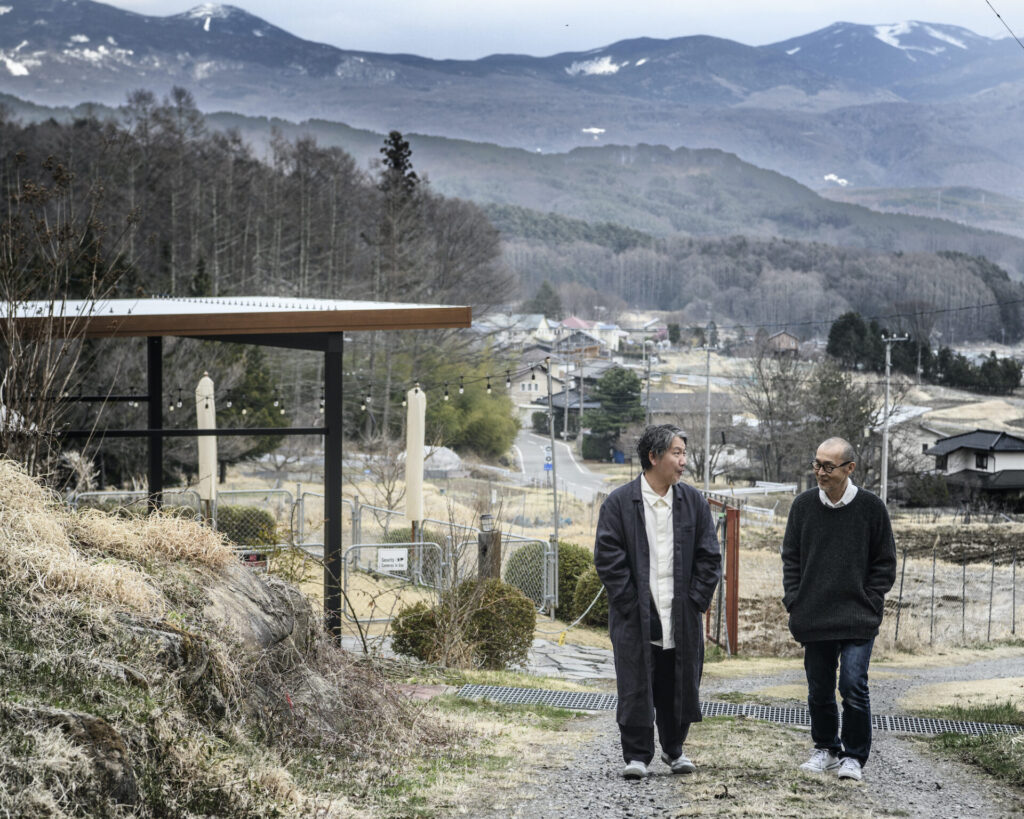
Profile
-
Mikio Hasui
Born in Tokyo in 1955, Hasui began studying photography independently in 1984. After working as an art director, he started his career as a photographer following a solo exhibition in 1988. He attracted attention for his portrait works of famous people, including his work in the magazine called “03” published by Shinchosha. “PEACE LAND,” a series of photographs taken since the 1990s, is a collection of works that form the core of his worldview. He has continuously presented his new works for this collection through publications, and it was added to the collection of the Bibliothèque nationale de France in 2009. Since around 2000, he has expanded his activity to video and created many PVs and commercials, involved in direction, shooting, and editing. He currently runs a photo studio called “Photo Studio Next to the Forest” in Chino, Nagano, and continues artistic activities in Tokyo and Nagano. He also actively engages in lectures and photography workshops for children, capitalizing on his own experience.
Major Awards
Spikes Asia Silver Spike(THERMOS, 2017)
67th Nikkei Advertisement Awards(Cabinet Office, Government Of Japan, 2018)
APA AWARD2019 Beautiful Japan(THERMOS, 2019)https://mikiohasui.com -
Masakazu Shigeta
After working as an engineer in the music industry, Shigeta began his career as a cosmetics developer in 2001. From 2004, he worked on various cosmetics brands in the healthcare business of Nitto Denka Kogyo Co., Ltd., a metal surface treatment company founded by his great-grandfather. In 2017, he founded “OSAJI,” a skincare lifestyle brand, and became its brand director. In 2021, as a new store of “OSAJI,” he produced “kako,” a specialized shop for home fragrances and perfume in Kuramae, Tokyo. In the following year, he opened a combined shop of “OSAJI,” “kako,” and a restaurant, “enso,” in Kamakura, Kanagawa. In 2023, utilizing the technical skill of Nitto Denka Kogyo, he launched a pottery brand, “HEGE,” and in October of the same year, he became CEO of OSAJI Inc. He also has published books on beauty and held cooking classes and events focusing on food, which is the origin of beauty. He released a collaborative album with F.I.B JOURNAL called “Gensho hyphenated” in November 2024 and has been expanding the range of activities.
Publications
Taberu Biyou (Eating for Beauty) (SHUFU TO SEIKATSU SHA, 2024)
42-Sai ni Nattara Yameru Biyou, Hajimeru Biyou (Beauty cares to quit and start when you turn 42) (Takarajimasha, 2022)
Information
Exhibition
Beauty Dwells Even in the End of Decay
A photo exhibition by Mr. Hasui, featuring the photographs of national treasure-class potteries and wares from the Kinzangama Kiln damaged by the Noto earthquake. A portion of the sales of the 17 newly photographed pieces was donated to the restoration support. The exhibition was held at YUGEN Gallery TOKYO from January to February 2025, traveled to YUGEN Gallery FUKUOKA in March, and will travel to MUTAN in Komatsu, Ishikawa, from May 17 to 31.
17 portraits of the Sea
A solo exhibition by Mr. Hasui, scheduled to be held at YUGEN Gallery TOKYO from June 7 to 25, 2025. The photographs capture the coastal landscapes near nuclear power plants such as Tsuruga, Kashiwazaki, Hamaoka, Tomari, and Onagawa. The works reflect his thoughts that people should pay attention to the existence of boundaries that must not be crossed in the pursuit of comfort and convenience.
-
Photographs:Eisuke Komatsubara
-
Text:Masahiro Kamijo
NEWS LETTER
理想論 最新記事の
更新情報をお届けします
ご登録はこちら
ご登録はこちら
メールアドレス
ご登録ありがとうございます。
ご登録確認メールをお送りいたします。
